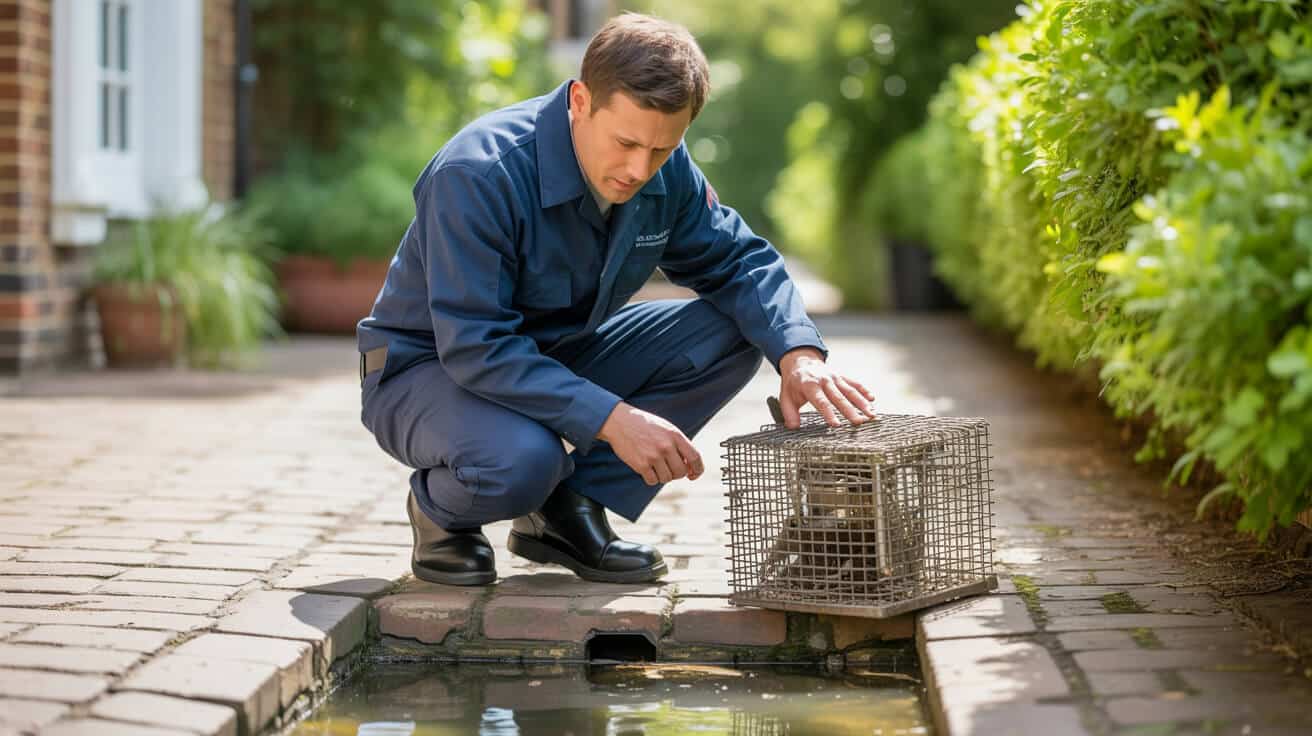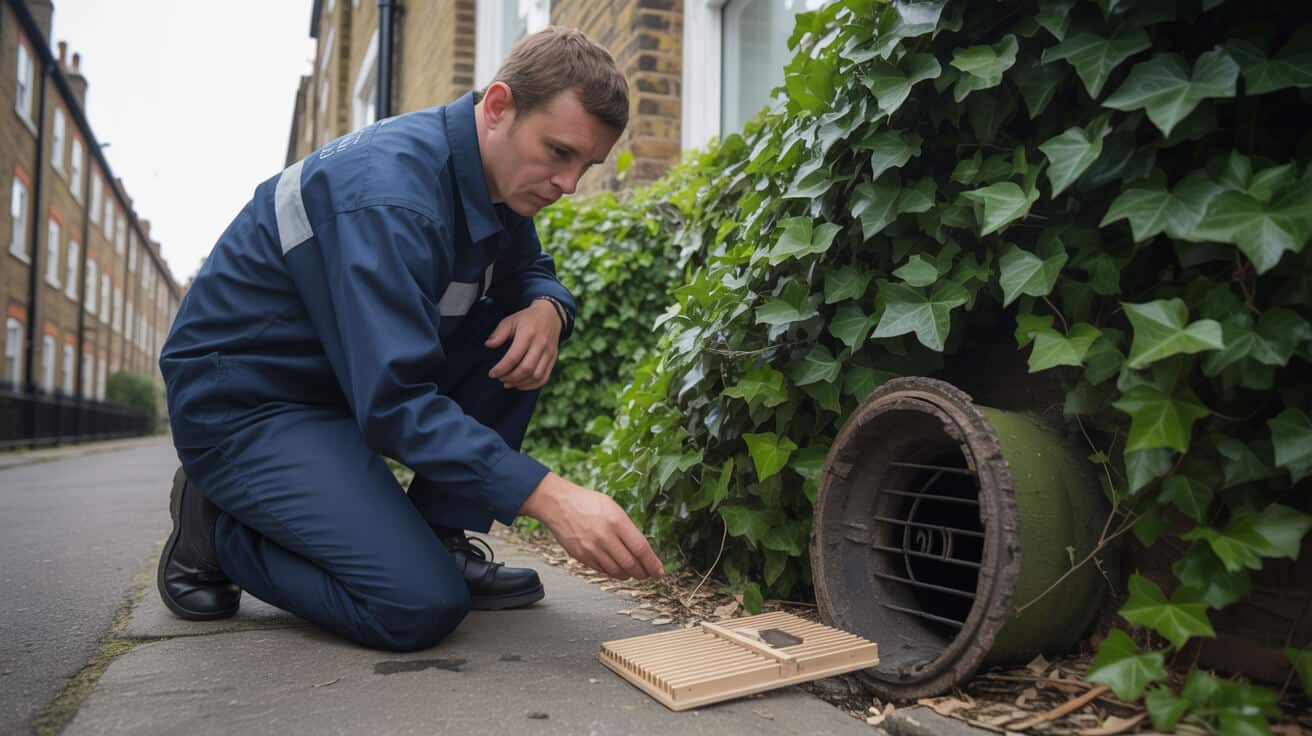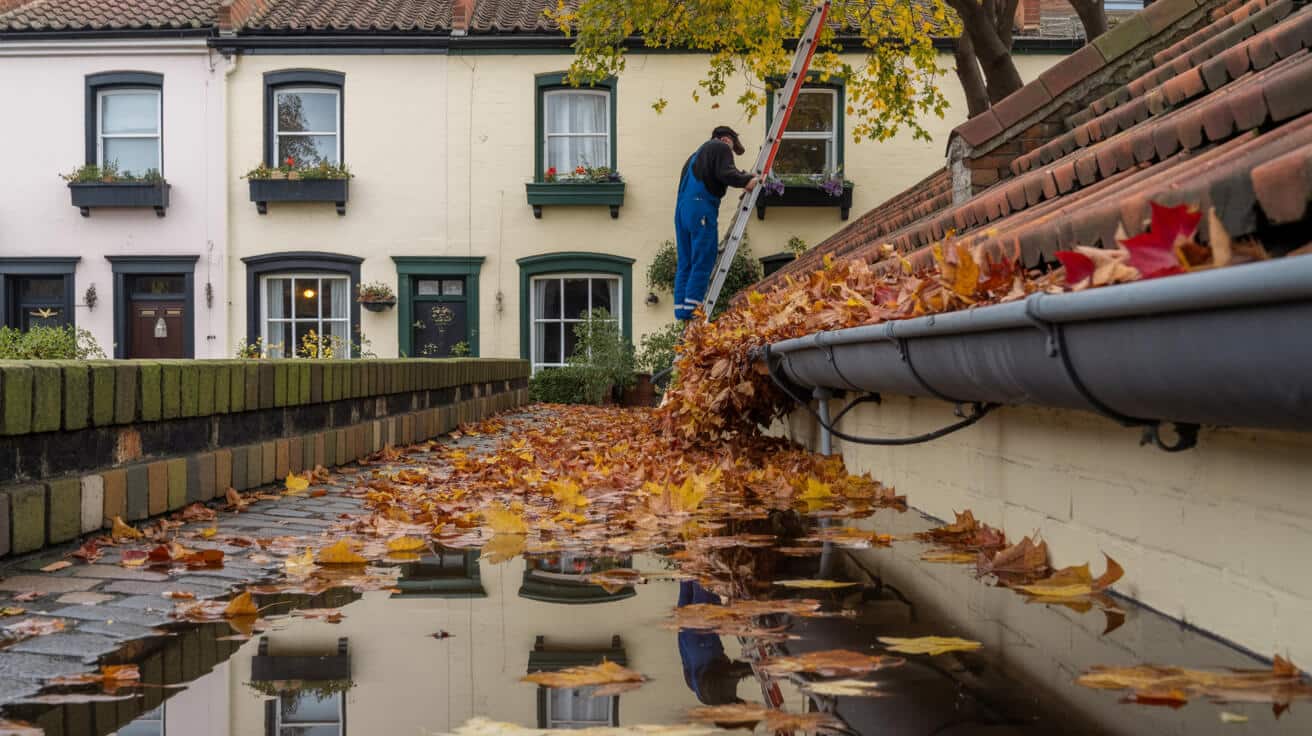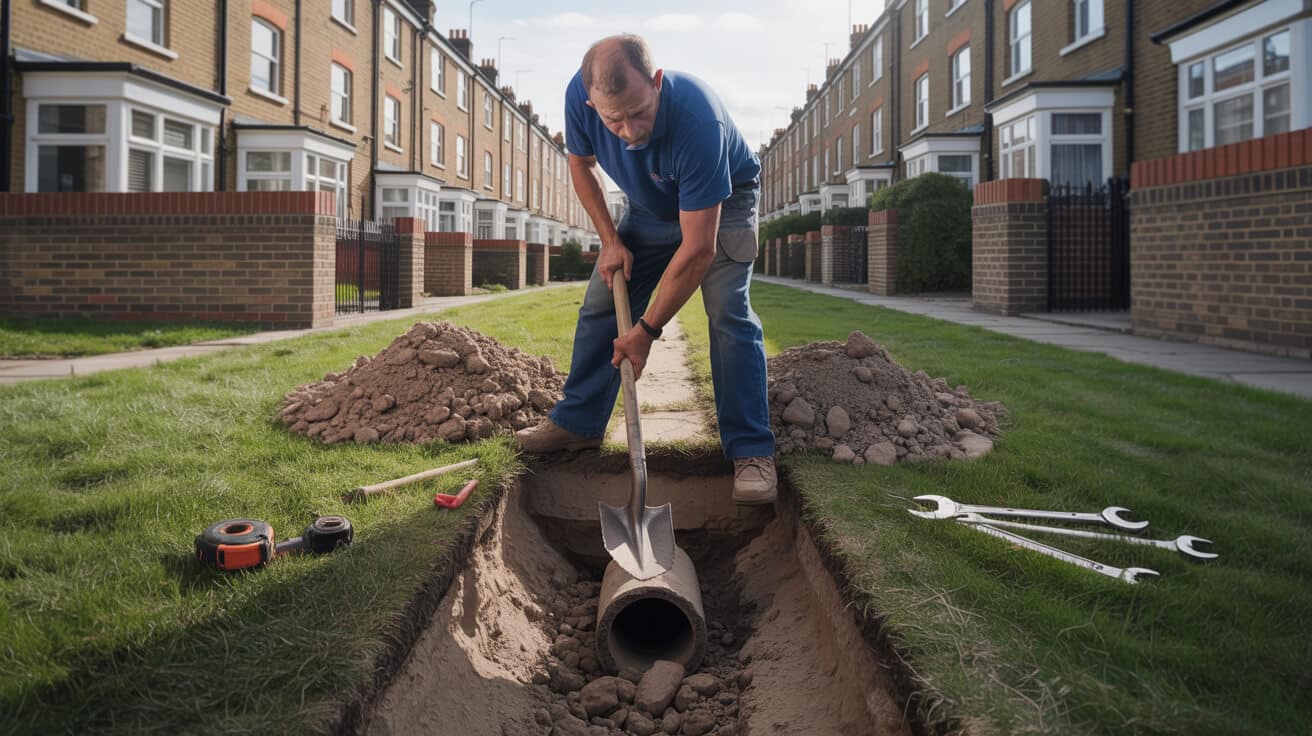 Saving Money on Central Heating 8 Energy Saving Tips
Saving Money on Central Heating 8 Energy Saving Tips

Is Your Central Heating System Silently Draining Your Wallet?
Every property owner, manager, and resident dreads the moment the heating bill arrives, only to find the numbers climbing higher each year. The real kicker? You might be leaking money not because your boiler is on its last legs, but due to smaller, quieter inefficiencies that escape most checklists. This slow drain isn’t dramatic. It’s insidious—too subtle for most to spot until costs pile up.
Most high bills aren’t down to ancient kit—they creep up because the system gets out of sync.
The comfort you pay for shouldn’t go up the flue. That’s why every cost-saving journey ought to start with a simple self-audit. Before diving into any advanced upgrades or searching for new gadgets, focus on these fundamentals—because a well-set foundation can outperform flashy energy-saving add-ons by a mile.
| Audit Check | Pass? | If ‘No’, Consider |
|---|---|---|
| All radiators hot top and bottom? | ⬜ | Bleed/balance or review zoning |
| Boiler pressure a steady 1.0–1.5 bar? | ⬜ | Top up now. If it drops again: get Plumbers 4U in |
| Thermostat actually working? | ⬜ | Reset or recalibrate, verify wiring |
| TRVs fitted and moving freely? | ⬜ | Adjust or replace for every room |
| Exposed pipes insulated? | ⬜ | Add lagging in lofts, garages, outhouses |
| WRAS/WaterSafe compliance checked? | ⬜ | Book a compliance health check |
Missing the target on two or more means your property is leaking heat—and cash. Engineers, including WRAS and G3-certified veterans like Hector Gauge, see it daily: missed lagging, old TRVs, ventilation issues, and overlooked pressure drops stacking up year round. Old boilers get the blame, but neglecting the basics does far more silent damage (WaterSafe, Energy Saving Trust).
If you’re managing rental portfolios or multiple properties, those simple checks multiply their value. Landlords: not only is this proactive, it’s now part of basic compliance. Homeowners: think of it as protecting both your comfort and your bank balance.
Don’t chase “savings tips” until your system’s foundation is rock solid. Every extra adjustment only stacks value when the basics are already working for you.
Are Your Thermostats Costing You More Than You Think?

The thermostat has evolved far beyond a plastic dial on the hallway wall. Yet, it remains one of the biggest gaps for wasted heat in UK properties. The difference between a “smart” home and a leaky one often isn’t high-tech—it’s calibration and routine attention.
A thermostat manages your heating, but if the device is in the wrong spot, mis-set, or ignored for months, you might be heating empty rooms or fighting with false comfort readings. The bills confirm it.
Smart Use, Smart Placement
Manual thermostats, digital programmers, and “smart” phone-connected stats all turn the boiler on or off. The real trick? Set routines that match real lives, not just preloaded time blocks. If a property is empty for chunks of the day but the timer ignores that, you’re burning money—not toast.
- Schedule heating for when people are actually home, not just mornings and evenings out of habit.
- Test every TRV—if it’s stuck or seized, that radiator could be heating all day, no matter what the stat says.
- Move stats away from direct sunlight, radiators, or draughts. Placement errors make whole-house bills go haywire.
- Portable digital thermometers (about £8) let you cross-check stat readings easily, exposing gaps.
Tweak the settings all you want—if rooms are imbalanced or your system’s out of sync, you’ll chase diminishing returns.
Hidden faults in stat placement or function cost property managers big, especially across multiple homes. One study found that lowering a true thermostat setting just one degree—assuming the reading is accurate—cuts bills by nearly 10% (Energy Saving Trust). But overlook placement or sticky TRVs, and you never see those savings.
Recalibrate, don’t just replace. Make sure your thermostats understand your routines as well as you do.
Will Lowering the Stat Leave You Shivering—or Actually Trim Your Bills?

A favourite talking point: turn the thermostat down a degree, save 10%. It’s repeated so often, you might be forgiven for thinking it’s the only step needed. Reality is less forgiving. If the system is poorly balanced, radiators have airlocks, or the pressure is wandering—dropping the stat is as likely to cause cold feet as cost savings.
Why the 1-Degree Rule Doesn’t Always Deliver
- The “magic” doesn’t work if radiators have cold patches. Balancing and clearing air must come first.
- Pressure drops? Until you solve that, lower temperatures just reveal new cold corners and unhappy tenants.
- TRVs stuck open provide uncontrolled heat—stat tweaks then miss the target entirely.
Children, older adults, anyone with health concerns? Best not to dip below 20°C, per WHO guidance. For most, 19°C is fair, but only after all kit is maintained and balanced.
Balancing fixes the bill as much as lowering the stat—sometimes, more.
The bottom line: there’s no shortcut past good maintenance. Once basics are dialled in, even small temperature drops provide comfort and cost relief—never just one or the other.
How Does Smarter Scheduling Cut Bills Without Losing Comfort?

Too many heating systems burn money quietly, running all day “just in case” rather than in tune with actual usage. Timers and programmers often get left untouched for entire seasons, leaving comfort in conflict with the household’s actual rhythm.
Heating isn’t binary. It’s about fitting around life, not the other way round.
Real-World Scheduling Beats All-Day Running
- Two-zone timer: set a “wake-up” and “evening wind down” schedule for living spaces.
- Use ‘holiday’ or ‘frost’ modes when properties are empty—even two days absence stacks up £20–£30 in savings for some.
- Smart stats with phone-app geofencing: heating auto-activates as you leave the office, not at 4PM sharp every day.
- For larger portfolios, smart grouping simplifies check-ins and helps keep EPC and compliance paperwork tidy.
Typical annual savings for properties with good scheduling? Anything from £130 to over £200 per year, varying with house size and winter severity (Energy Saving Trust).
A heating plan that reflects your real schedule—not just the clock—pays back every month.
Whether you’re a homeowner, landlord, or block manager, investing an hour to tune your timers and routines is a high-return move. Review and adjust just like you would your bank statement—waste adds up quietly if you never look.
Are Zoning and TRVs the Key to Room-by-Room Savings?

The magic of room-based savings lies with TRVs and well-executed zoning—if, and only if, you actually use them. In the UK, far too many radiators are fitted with TRVs that get ignored, stuck, or set “max-all-winter” and then forget it.
Zoning isn’t just for luxury new-builds. Every home or block with TRVs and simple programmers can harness these savings—if they’re regularly adjusted for the way people actually live and move.
Maximising the Value of TRVs and Zoning
- Spare rooms, corridors, and storage spaces: set TRVs low and close doors. Stop paying to heat square footage you aren’t using.
- Don’t assume the original instal got it perfect. Jobs mix TRVs, programmers, and curious layouts—review zones every autumn and on every change of tenant or room usage.
- For landlords and letting agents, plan portfolio-wide TRV checks in autumn; the benefits multiply fast when scaled.
Annual UK savings for active zoning and TRV use: up to £150 is realistic, provided all valves work and are moved at season’s changeover (Energy Saving Trust).
One stuck TRV and it can cost hundreds across a portfolio—most don’t realise until the bill lands.
The real win isn’t always high-tech. Regular, attentive hands—liven every TRV up twice a year and tie zones to living patterns.
Does Running Your Heating All Day Actually Save Money—Or Is That a Costly Myth?

A persistent myth says that running heating at a constant low setting all day costs less than cycling it two or three times by timer. Real-world evidence from engineers and bill data says otherwise for the vast majority of UK homes, unless you’re inside a new-build dream with top-notch insulation.
| Heating Method | Typical Saving/Loss | Best-Suited Homes |
|---|---|---|
| Timed smart schedule | Up to £150/year save | Ordinary houses, flats, portfolios |
| 24/7 low heat | Up to £150/year loss | Best-in-class new builds only |
| ‘Frost’/vacant mode | £100+ saved/absence | Any—especially empty properties |
Almost all period and “retrofit” homes lose more heat per hour than they gain by constant low heating. If you’re unsure, test both for two weeks and check the metre—most see clear winners given even one billing cycle.
Landlords and property managers often clear up complaints about bills (and lost tenants) by switching back to well-planned timer use. These are fixes that scale across portfolios and cut the bottom line measurably.
Ten homes out of eleven: timers win. Only the best-insulated should ever try 24/7 running.
Old advice dies hard, but your wallet will thank you for challenging the myth.
How Much of a Difference Do Insulation and Pipe Lagging Really Make?

Physical upgrades are the multipliers that compound every timer tweak, thermostat adjustment, and TRV nudge you can make. Ignore insulation, and every penny spent on combustion or electricity partly floats out your doors, roof, or visible pipes.
| Home Upgrade | Yearly Impact | DIY/Trade? |
|---|---|---|
| Loft insulation (top up) | £120+/year save | DIY or professional |
| Pipe lagging (loft, garage) | £25–£40/year | Easy DIY |
| Draughtproofing | £40–£60/year | DIY or handyman |
Upgrades to insulation and pipe lagging rarely require upheaval. Rolled loft insulation, a few metres of pipe lagging, or fresh draught seals can be added piecemeal, often on a single afternoon.
For landlords: insulation is directly tied to EPC score and minimum standards for letting post-2024. Upgrades here are not “nice to have”—they’re mandatory in many cases and can boost rental value and compliance alike.
Upstairs cold? Unlagged pipes may be the villain—sort those first, and everything downstream runs cheaper.
To simplify: don’t let expensive heat vanish before it gets to you. Each upgrade refocuses spending on comfort, not the outside air.
When Is It Time to Book a Full Heating System Health Check?

Not every heating fault can be solved with DIY and YouTube. If you’re seeing persistent pressure drops, partial cold radiators, or regular complaints from tenants or family, it’s time to book a full system health check with a qualified engineer.
What a Professional Audit Actually Delivers
- Leak checks trace system losses invisible to the naked eye, keeping compliance and insurance up to date.
- Balancing radiators and tuning TRVs evens out comfort across all rooms, not just the “best” zone.
- Thermostat and programmer cross-checks align controls with your use and patterns—not factory defaults.
- Documentation of compliance—WRAS, WaterSafe, G3 sign-offs—keeps you ahead of the game for tenancy, insurance, and peace of mind.
Delaying a health check until winter bites is a risk: the fix often costs ten times more due to call-out surges and afterhours rates. Portfolio managers know one thing: preventative action saves money, builds trust, and stops disputes with tenants and insurers.
A thorough check stops surprises in cold weather—delays can be ten times costlier if you wait for a holiday rush.
Getting ahead of issues means smooth sailing through every season.
Speak With Plumbers 4U Today
Central heating savings don’t come from hoping or guessing—they’re built layer by layer through fundamentals, regular fine-tuning, and honest, transparent support.
Plumbers 4U, led by Hector Gauge (WRAS, G3, WaterSafe certified), is built on more than tools; it’s a culture of doing the right thing: auditing thermostats, balancing radiators, checking insulation, keeping compliance water-tight, and backing every job with genuine aftercare. There’s no surprise upsell—just clear insights, tidy instals, and a steady hand on every wrench.
A careful audit, a few smart upgrades, and a well-set timer: that’s how families and portfolios keep warm and costs in check.
Book a winter health check or start a DIY audit today. Every minor improvement adds up to lasting comfort, regulatory compliance, and real savings. Plumbers 4U is not just about fixes—we deliver the assurance that your property is always in safe, responsible hands, season after season.
Frequently Asked Questions
What causes heating costs to stay stubbornly high, even after lowering your thermostat?
Turning your thermostat down by 1°C is only a shortcut to savings if your entire heating ecosystem works as it should. The Energy Saving Trust points to figures—up to £130 saved every year for an efficient home—but in most properties, unseen flaws inside the system eat up those savings before you ever feel them. An unbalanced radiator, poorly sited thermostat, or even a fault in a programmer quietly sabotages the effort. Draughts and thin insulation can make a reduced setpoint feel like punishment, not progress. For older or vulnerable residents (children and elderly in particular), anything below 20°C isn’t safe by NHS standards, making generic advice dangerous to follow blindly. Landlords and facilities managers, especially in multi-tenant buildings, see the quickest gains when a Plumbers 4U engineer does a full system health check before chasing thermostat savings. In effect, without a healthy system, turning down the dial just turns up the discomfort—while bills barely move.
Comfort collapses when system flaws hide behind a ‘low’ thermostat.
What steps unlock real thermostat-based savings?
- Confirm radiators are hot top-to-bottom, with no lingering cold spots after balancing.
- Ensure the thermostat is in a lived-in room—not near a draught or heat source.
- Check programmers, TRVs, and zone valves for correct sequence and timing.
- Plug draughts under doors and windows; loft insulation should hit or exceed the recommended depth (27–30 cm).
- For any lingering doubt, order a full heating audit that pins down root causes instead of symptom-chasing.
Genuine, repeatable savings only arrive once underlying system issues are hunted down and fixed. Plumbers 4U offers clear, WRAS-approved reviews—a route proven to pay back within one billing cycle for most homeowners and landlords.
Which daily heating practices prevent wasted energy when properties sit empty for hours?
Heating an empty home “just in case” does more for the energy supplier than your comfort—or your bank balance. Modern controls, even without the latest “smart” tech, let you programme two main windows each day: one shortly before waking, and one before occupants return. App-based controls handle unpredictable routines, but even a classic seven-day timer enables a significant cut in wastage. Skipping midday heating altogether—unless someone’s inside—can carve £150–£200 off yearly bills, according to recent studies from OVO Energy and EST. “Frost” modes guard pipes at minimal cost if you’re gone overnight. For property managers and landlords, combining this approach with asset-wide scheduling policies unlocks portfolio-wide savings.
Empty rooms burn pounds, not just gas—a missing schedule guarantees waste.
How do you set up routines for efficiency?
- Programme morning and early evening bursts—skip unnecessary midday cycles.
- Activate “holiday” or “frost” protection for longer absences; don’t rely on permanent “low” settings.
- Try App/remote tweaks for last-minute changes (most classic timers can now be upgraded).
- At every change of occupant, reset the timer to match real use—not last tenant’s habits.
Even small schedule tweaks can deliver an outsized reduction in fuel use. If programming controls feels like guesswork, Plumbers 4U offers a hands-on explainer or can re-set any system as part of a standard service.
How do smart thermostats and TRVs actually create bigger savings versus traditional heating controls?
smart thermostats and digital radiator valves stand out in homes or commercial buildings with unpredictable schedules or spare rooms—places where the “one-setting-fits-all” approach fails. The distinction? Smart controls learn actual living patterns, enabling real savings only where and when warmth is needed. According to BEIS and National Energy Action’s 2024 survey, homes using smart zoning with active schedules saw an extra 8–12% shaved off annual costs, averaging £100–£180 saved per year. Multi-zoned systems excel in properties with guest rooms, offices, or recurring occupancy swings; in smaller flats or single-tenant lets, rapid payback isn’t guaranteed unless users actively adjust and test features. Energy managers for blocks, offices, or schools now favour smart retrofits so they can rapidly respond to changing use patterns without overhauling core pipework.
A smart system stops heating empty rooms—your bill reflects what gets used, not what’s ignored.
Where do TRVs and smart stats lag behind?
- Flats with set routines may recoup only comfort upgrades, not significant savings.
- Ignored or default settings make even high-tech controls into expensive timers.
- Maximum gains only show up if all rads match zone settings—partial upgrades create only partial results.
Ready to see if your system is compatible? Plumbers 4U fits and configures smart thermostats and TRVs, offering tailored tips so every user knows exactly how to unlock (and keep) the savings.
What types of insulation upgrades guarantee the fastest ROI on heating bills?
Loft insulation, pipe lagging, and strategic draught-proofing are the unsung heroes of energy savings. Topping up loft insulation consistently yields over £120 off annual bills, sometimes repaying its instal cost within a single winter (Energy Saving Trust, 2024). Pipe lagging stops heat vanishing from unprotected runs in cold garages or lofts—simple foam sleeves easily add £25–£40 in yearly savings. Draught excluders on external doors and windows can mean another £40–£60 per year that isn’t lost to the breeze. The effectiveness ramps up when used together, especially ahead of any tech upgrades (new boilers or smart controls).
| Upgrade Method | Typical Saving / Year | Installation Route |
|---|---|---|
| Loft insulation (top-up/full) | £120+ | DIY/Pro |
| Pipe lagging (exposed runs) | £25–£40 | DIY |
| Draught-proofing | £40–£60 | DIY/Handyman |
No thermostat can outrun the loss from an uninsulated roof—savings leak away with the heat.
How do landlords and managers maximise insulation benefit?
- Bundle insulation and compliance audits—catch savings and legal risks in one go.
- Opt for professional reviews for complex or large housing units; patchy coverage means patchy results.
- Use pipe lagging in overlooked cold zones—garages, lofts, and outhouses often go missed.
Plumbers 4U offers full insulation reviews paired with heating health checks, ensuring you capitalise on every watt produced—locking value in for your household or property portfolio.
When does a DIY approach fall short, making a professional heating audit non-negotiable?
If repeated radiator bleeding, pressure topping, or timer resets aren’t delivering reliable warmth, the issue is likely deeper—and ignoring these signs risks both comfort and compliance. Persistent cold patches, unexplained pressure drops, or stats not matching lived zones often point to hidden leaks, valve faults, or subpar installations. In rental or managed spaces, lapsed G3 (unvented), CP12 (Gas Safe), or missing WRAS compliance can void insurance or trigger legal headaches. A comprehensive audit reviews not just each part, but how all elements cooperate—and spots the root causes before costs balloon.
DIY can chase the symptoms—only a professional finds what’s quietly draining your wallet.
Red flags that trigger a pro call:
- Boiler needs pressure top-up more than once a season, with no visible water traces.
- Certain rooms never warm, even as the main loop works fine elsewhere.
- Controls (TRV, stat, programmer) don’t deliver comfort in priority spaces.
- Certificates for safety, legal, or compliance are up for renewal, or missing.
Plumbers 4U’s audit reviews every link in your heating chain, offering fixes that bring performance—and legal confidence—straight back for landlords, managers, or meticulous owners.
Which everyday behavioural changes have the biggest impact on heating bills, regardless of system upgrades?
Day-to-day discipline—like closing doors on unused rooms, drawing curtains as dusk falls, or never blocking radiators with laundry—routinely delivers monthly savings that rival some high-end upgrades. Britain’s 2024 Smart Heating Report found that households who combine consistent habits with even modest hardware tweaks save an average of £30–£100 each winter. Using a portable thermometer to “check the checker”—making sure your stat reads true comfort—prevents thermostat drift. Lowering TRVs for unused spaces, leaving under-door airflow gaps, and steering sofas away from radiators all keep warmth on your side.
- Drop the TRV or shut the door on little-used rooms.
- Draw thick curtains at dusk—bonus points for single or period glazing.
- Test main thermostat readings fortnightly with a stand-alone sensor.
- Never dry laundry on radiators or obstruct heat flow with large furniture.
- Schedule seasonal “habit audits” for everyone sharing the home or managing the property.
Consistent habits, not just clever tech, compound into real-world savings.
Why are habits a force multiplier?
- Discipline compounds with tech upgrades—routine reviews lock in the payback.
- Landlords can tip the savings equation across all lets by embedding routine checklists.
Plumbers 4U engineers walk clients through these no-cost wins every service call—leaving you with a plan, not just a receipt. Book a home or portfolio review today and discover hundreds in hassle-free savings hiding in your daily routine.
Own your heating, your comfort, and your energy costs—in every room, every property. Plumbers 4U partners with you at every step, from quick fixes to smarter controls and strategic insulation. Book your heating health check or full audit with confidence, and turn knowledge into warmth and savings for years to come.



